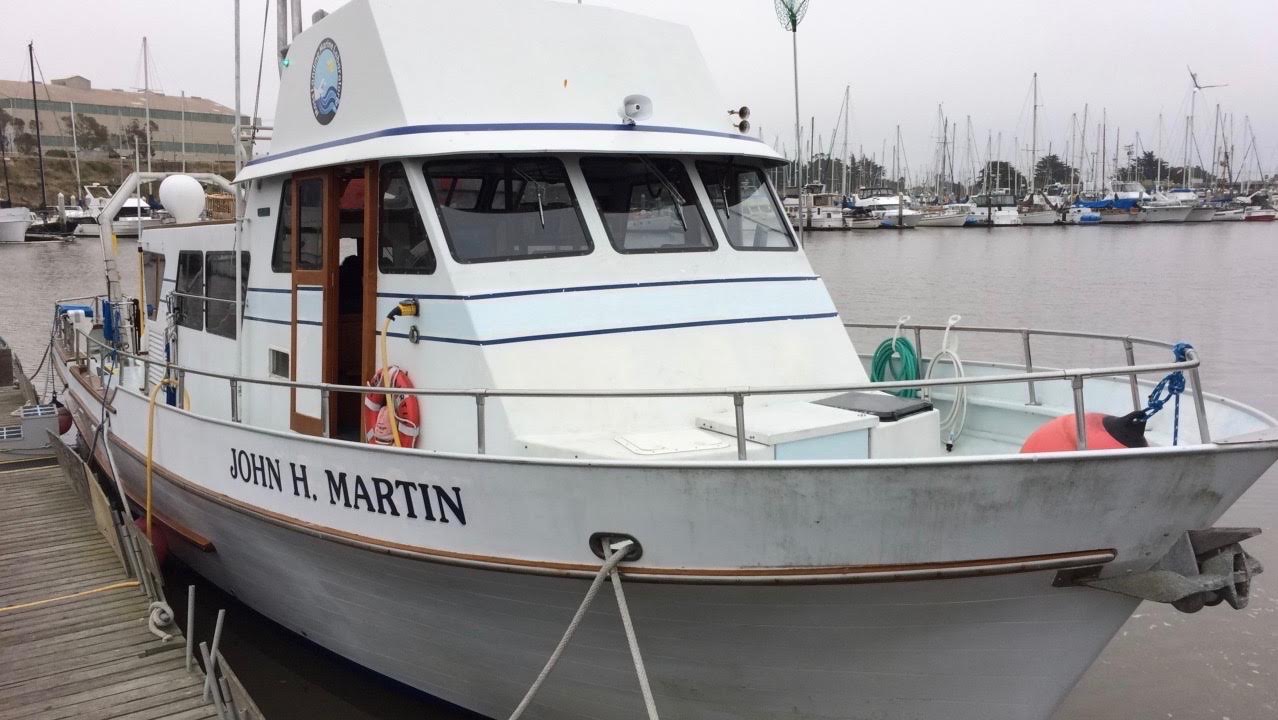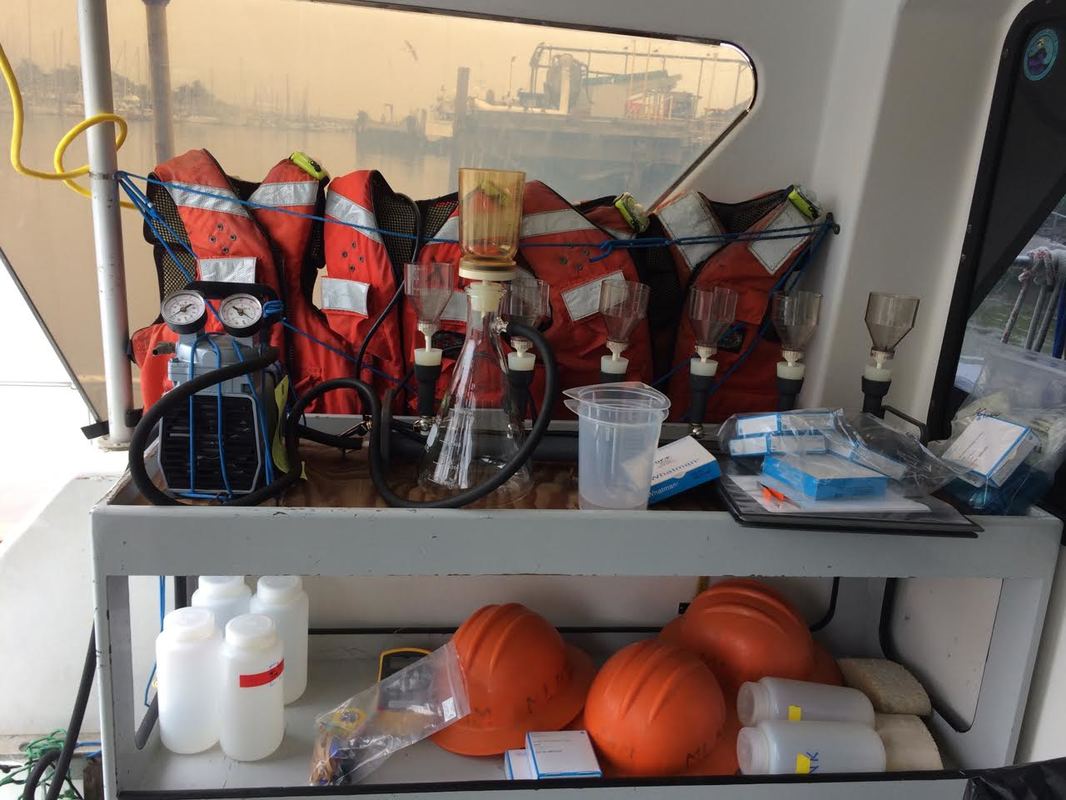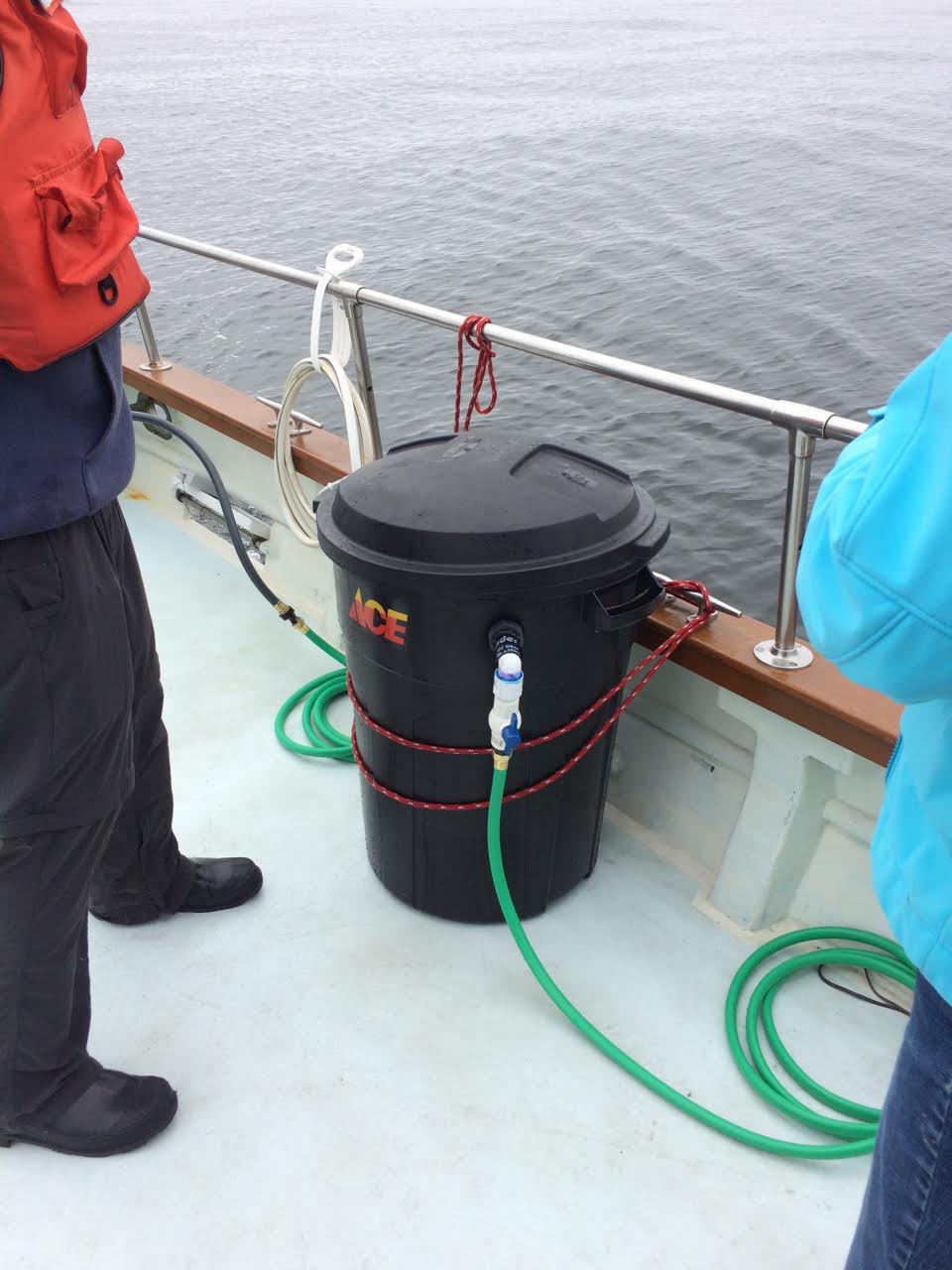 Jaylyn Babitch is a Masters student in the Stauffer Lab. She recently spent a week in central CA with our collaborators in the Alliance for Coastal Technologies as they tested multi-spectral fluorometers that can distinguish among different classes of phytoplankton, including groups that cause harmful algal blooms (HABs). Here she shares some of her experiences in the field. With colleagues from Moss Landing Marine Lab, UC Santa Cruz, and University of Michigan, we did a one-day cruise throughout Monterey Bay aboard the R/V Martin, stopping at 7 stations to assess the performance of 5 new fluorometers under a variety of estuarine to marine conditions. This cruise was part of a technology validation exercised led by ACT to document performance of these new sensors against reference methods.
A lot of times, field work = tapping into your best MacGyver skills. This was our very high-tech (or rather ingenious) garbage can flow-through system, which allowed the fluorometers to all be exposed to the same water parcel, and therefore the same abiotic conditions and phytoplankton assemblages, at the same time during each station stop. These sorts of considerations are part of what makes the ACT team a top notch testing group! Additional field tests are being done throughout the rest of the summer in freshwater and estuarine conditions with very different phytoplankton assemblages. Stay tuned to the ACT website for more info on test results for each fluorometer and for more information on technologies for hunting HABs across aquatic environments.
0 Comments
Your comment will be posted after it is approved.
Leave a Reply. |
AuthorsMembers of the Stauffer Lab in the Dept. of Biology at UL Lafayette. Check out the byline for specific blog post author information! Archives
March 2018
Categories |
Proudly powered by Weebly



 RSS Feed
RSS Feed